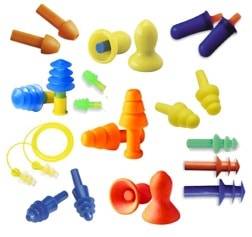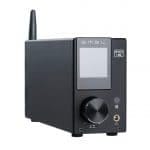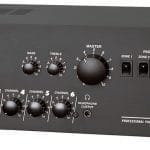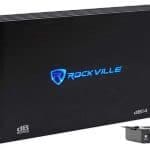Howard Leight LL1 Laser Lite Earplugs
Why do you need the Best Earplugs?
 Using the best earplugs is a good way to block out extreme noise coming from the outside. While they are mostly used to help you fall asleep in a noisy environment, they can also be used while firing a gun, at a rock concert, and during construction work. Many people use earplugs on a flight, train, or car when they are trying to get some sleep in a noisy environment. However, it is important to remember that earplugs do not block out all sound since small soundwaves can always slip through the earplugs and hit your eardrum.
Using the best earplugs is a good way to block out extreme noise coming from the outside. While they are mostly used to help you fall asleep in a noisy environment, they can also be used while firing a gun, at a rock concert, and during construction work. Many people use earplugs on a flight, train, or car when they are trying to get some sleep in a noisy environment. However, it is important to remember that earplugs do not block out all sound since small soundwaves can always slip through the earplugs and hit your eardrum.
The amount of noise an earplug blocks out this measured by the NRR or Noise Reduction Rating. Higher NRRs mean that the earplugs are better at blocking out sound. The typical range is 15-35 NRR. The best earplugs can be evaluated by the following features: durability, fit, and NRR rating. While the most common type of earplugs are made of foam, they can also be made of silicone or even electronic. There are also earplugs that can be custom molded to fit the ears. We have tested many earplugs on the market and have reviewed what we think are the best.
Best Earplugs Reviews
- Howard Leight LL1 Laser Lite Earplugs (Top Pick)
- Radians Custom Molded Earplugs
- LiveMusic HearSafe High Fidelity Earplugs
Howard Leight LL1 Laser Lite Earplugs
 If you are a fan of disposable earplugs the Howard Leight’s are the best earplugs for you. We really think disposable earplugs are the way to go. When you put something in your ear, take it out, and put it on the table it will surely get dirty. Putting that same earplug back in your ear is a bit unhygienic and the best way to avoid all this is to use disposables. Besides they look pretty cool and are quite comfortable.
If you are a fan of disposable earplugs the Howard Leight’s are the best earplugs for you. We really think disposable earplugs are the way to go. When you put something in your ear, take it out, and put it on the table it will surely get dirty. Putting that same earplug back in your ear is a bit unhygienic and the best way to avoid all this is to use disposables. Besides they look pretty cool and are quite comfortable.
The Howard Leight LL1 is made of polyurethane foam, which basically means it is light, fluffy, and durable. Polyurethane foam is known to be softer than PVC and conforms better to your ears. We find that the contour T-shaped foam expands quite well and really does a good job filling your ear cavities without feeling uncomfortable. It expands to fill The outer lining also does a great job preventing the buildup of ear wax.
In terms of NRR rating, it has one of the highest in the industry at 32. Since NRR ratings vary on a scale of 15-35, the Howard Leights are on the higher end of this range. These earplugs do a great job blocking out sound, although it doesn’t block out everything. As the name NRR implies, it reduces noise, but not entirely. But to put things in perspective, we tried these while shooting a gun and we found it has the best noise reduction out of all the earplugs we tested. And best of all, they are disposable, so you can just put on a new pair the next day. You can’t go wrong with a pair of these and they remain our top pick for best earplugs.
Radians Custom Molded Earplugs
 Radians Custom Molded earplugs are the best earplugs to buy if you want an earplug that will custom fit your ears. Why would you want custom molded earplugs? Because they are extremely comfortable and do a great job blocking out noise. With the Radians, you have to mold the earplugs yourself because they don’t just come pre-molded.
Radians Custom Molded earplugs are the best earplugs to buy if you want an earplug that will custom fit your ears. Why would you want custom molded earplugs? Because they are extremely comfortable and do a great job blocking out noise. With the Radians, you have to mold the earplugs yourself because they don’t just come pre-molded.
The process is quite simple. First, you separate the blue and white putty into two halves. Then take half a blue and mix it with half a white and rub it into a ball. Then slowly but firmly insert the mixture into one ear while slightly opening your mouth. If there is any excess, spread it around the outside of your ears. Let the putty settle for 10 minutes without moving your jaw. Finally, gently twist the earplugs out and you are done. Simply repeat the process for the other ear.
In terms of Noise Reduction Rating, it is advertised as 26, however, in reality, it is much higher. Because it doesn’t take into account how well it is molded to your ears, 26 is really an underestimate. If you are able to mold the putty well to your ears, we think it does a very good job of blocking out noise. More importantly, these earplugs do not fall out, which is quite important when you are trying to fall asleep and twist and turn a lot. While normal earplugs tend to fall out during sleep, the Radians are so well fit that they fit snuggly and yet feel great. They also last a long time and do not break and wear down after a wash cycle. Radians are made of silicone and are gentle, smooth, yet firm. If you want the best earplugs that are custom molded, you should definitely look into Radians.
LiveMusic HearSafe Ear Plugs – High-Fidelity Earplugs
 If you want a pair of the best earplugs that are built with professional craftsmanship, you should get the LiveMusic High Fidelity Ear Plugs. These plugs are designed for musicians but can really be used for all sorts of activities including trying to fall asleep. These earplugs are made of silicone and are triple-flanged, which basically means they probably have a tight snug fit that will not fall out.
If you want a pair of the best earplugs that are built with professional craftsmanship, you should get the LiveMusic High Fidelity Ear Plugs. These plugs are designed for musicians but can really be used for all sorts of activities including trying to fall asleep. These earplugs are made of silicone and are triple-flanged, which basically means they probably have a tight snug fit that will not fall out.
Also unlike traditional foam earplugs, the triple-flanged design includes precision filters that gradually scale up in strength. These filters/dampers serve to reduce background noise and high frequencies in a tiered manner and really do a good job.
The three flanged systems are quite unique to these earplugs and we really applaud the sound engineering behind this. When you buy the LiveMusic Earplugs you actually get two pairs. They are very durable and last a long time. They can withstand a beating and are made for continuous wear. In fact, the company gives you a lifetime guarantee on these headphones as long as you don’t lose them.
The two pairs of earplugs are different in terms of Noise Reduction Rating (NRR). The white-tipped earplugs have an NRR of 29 decibels and the green-tipped ones have an NRR of 23 decibels. We like that the earplugs have different decibels ratings so you can choose the one that best fits your needs at the time.
The LiveMusic also comes with a removable cord so that you can wear it around the neck and remove them if necessary. It also comes with a handy little travel case that perfectly fits these earplugs. Overall, we really like the earplugs and they are backed by many professional musicians. If you want the best earplugs that are durable and have various levels of noise reduction and a snug comfortable fit, you should get the LiveMusic HearSafe Ear Plugs.
Finding the Best Earplug
 There are four things you need to consider when shopping for the best earplugs. They are NRR or Noise reduction rating, comfort level, durability, and price. In terms of Noise Reduction Rating, it is required by the EPA on all products that reduce outside noise. Noise Reduction Ratings have a typical range of 15 – 35 decibels and earplugs with higher ratings tend to block out more sound.
There are four things you need to consider when shopping for the best earplugs. They are NRR or Noise reduction rating, comfort level, durability, and price. In terms of Noise Reduction Rating, it is required by the EPA on all products that reduce outside noise. Noise Reduction Ratings have a typical range of 15 – 35 decibels and earplugs with higher ratings tend to block out more sound.
Comfort level is another factor when trying to find the right earplugs for you. Earplugs should fit into your ears easily and be able to stay in without easily falling out. You don’t want earplugs that are too tight or too loose. Custom molded ear plugs are going to be the best fit and have the highest comfort level. In terms of durability, some earplugs are more durable and last longer than others.
There are earplugs that are known to tear and some that collect dirt easily. It is important to also get a pair of earplugs that last a long time. Otherwise, you can look into disposable ones. Finally, price is always a factor. Earplugs are generally cheap but there is also a wide variety of products out there. You can also have really expensive earplugs out there. In general, you pay for quality and more expensive earplugs tend to work better and be more comfortable.
Earplug Material & Design
 The best earplugs are generally made of either foam or silicone and some can even be electronic. Foam is the most common material used in earplugs and usually, they are memory foam. This type of foam tends to expand in your ear canal and create a tight fit. Foam is usually either polyurethane foam or PVC. Polyurethane is a softer material and has taper shapes such as a bullet. PVC is harder but tends to stay in place longer. Foam earplugs can come in many styles.
The best earplugs are generally made of either foam or silicone and some can even be electronic. Foam is the most common material used in earplugs and usually, they are memory foam. This type of foam tends to expand in your ear canal and create a tight fit. Foam is usually either polyurethane foam or PVC. Polyurethane is a softer material and has taper shapes such as a bullet. PVC is harder but tends to stay in place longer. Foam earplugs can come in many styles.
They can either be cordless, corded, no-roll, flanged, or custom molded. Cordless plugs tend to be cheaper and sometimes disposable. A corded earplug is great for keeping around your neck when you are not using it. No-roll earplugs are very convenient to insert and you don’t have to roll them up before putting them in your ear. Instead, you insert the earplug through a stem and is quite sanitary. Flanged earplugs have flexible flaps that offer a higher level of decibel protection than most traditional foam earplugs. Finally, custom-molded earplugs provide the tightest fit and are often the most comfortable. It takes some time to initially set up and make but it is worth it.
Silicone is another popular material used to make earplugs. Silicone earplugs tend to be more expensive but also more comfortable than foam earplugs. Because silicone earplugs are usually made to be placed over the ear canal, they provide a level of comfort that foam earplugs can’t. Finally, some of the best earplugs can be electronic. Electronic earplugs can be tuned to only filter in a certain decibel of sound. They are for people who still want to hear, but would just like to filter out the higher-decibel sounds.
Decibels and Noise Reduction Rating
 The intensity of sound is measured in decibels. Decibels are represented using a number usually 1-150 and scales non-linearly. What this mean is a 3-point increase in decibel level represents a double sound intensity. A 10-point increase represents a 10-fold level in volume. The 90-150 decibel range represents what the OSH calls excessive noise. Anything over 120 decibels would be dangerously high. To give you a rough idea of how decibels scale, see the following:
The intensity of sound is measured in decibels. Decibels are represented using a number usually 1-150 and scales non-linearly. What this mean is a 3-point increase in decibel level represents a double sound intensity. A 10-point increase represents a 10-fold level in volume. The 90-150 decibel range represents what the OSH calls excessive noise. Anything over 120 decibels would be dangerously high. To give you a rough idea of how decibels scale, see the following:
- Faint Noise: 20-40 decibels. Examples are wind breezing and light chatter
- Moderate Noise: 40-60 decibels. Examples are rain and normal conversations
- Loud Noise: 60-90 decibels. Examples are a car engine on idle and a loud conversation
- Very Loud Noise: 90-110; Examples are leafblowers and music concerts
- Painful loud: 120+ decibels; Examples are engines from jets and airhorns
Noise Reduction Ratings also scale in a non-linear fashion. In fact, the number of decibels lower is equivalent to (NRR-7)/2. In other words, earplugs with an NRR of 25 reduce decibels by 9. This is nearly a 10-fold reduction in sound.








